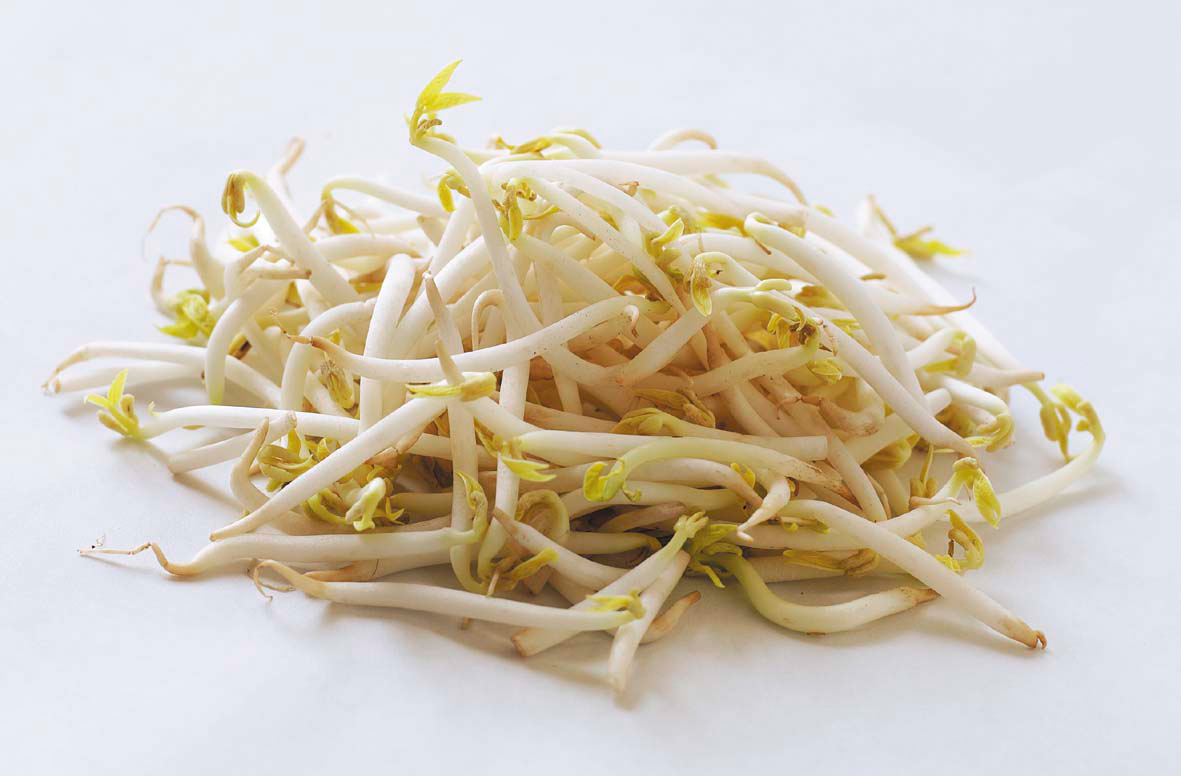
Growing bean sprouts at home Makergardener
Beans: garden beans-including pole, bush, and shell-lima beans, mung beans, scarlet runner beans, asparagus beans, and southern peas (which are not beans but share similar cultural requirements). All of these crops share similar problems. Here is a list of common bean problems and possible causes and cures.

Bean Sprout Macro Free Stock Photo Public Domain Pictures
Grow Unlimited Bean Sprouts Right At Home! No crop is easier than growing sprouts, and Mung Bean sprouts are the easiest of them all! In today's video, let's.

Bean Sprouts Free Photo Download FreeImages
Beans will germinate when the soil is between 70°F and 80°F. If the soil temperature is at or around 60°F, the seeds will germinate much slower and be more prone to rot. The plants grow best when the air temperature is between 65°F and 85°F. Beans will usually stop flowering during the heat of the summer months.

Bush bean hires stock photography and images Alamy
Here are our seven tips to grow prolific beans in containers. 1. Pick the Perfect Location. Beans need a good amount of sun to produce well. Look for a spot that gets at least eight hours of sunlight each day. If a location this sunny is difficult to come by, look for a variety of pole bean that is more shade tolerant.

Harvester Bush Bean Seeds Heirloom Hometown Seeds
Time sowing so that beans come to harvest before the first frost. Optimal soil temperature for growing bush or pole beans is 70°F to 80°F (16-18°C). If you want to start beans indoors, sow seed in peat pots 3 to 2 weeks before transplanting seedlings to the garden. The optimal indoor temperature is 65°F (18°C) until germination.

Provider Bush Snap Bean, 28 g Southern Exposure Seed Exchange, Saving
A small cup should give plenty of sprouts. Using a colander or strainer, rinse the beans in cold water until it runs clear. This removes dust and other impurities. Drain, rinse, and drain again. Place the rinsed beans in a bowl and immerse in water overnight for 12 hours. A ratio of 1:3 for beans to water is fine.

PostVacation Garden Growth Modern SelfReliance
The bean sprouts themselves are usually about 5 inches in length. In terms of taste, this is another popularity mark for this delicious bean variety! As a whole, you will find that Slenderette Bush Beans are incredibly juicy and have a sweet flavor, which makes them ideal for pairing with countless savory dishes as a side.

5 Sick with 2 Dead from Listeria Tainted Bean Sprouts in Illinois and
Best outdoor temperature for growing Brussels sprouts? Brussels sprouts thrive in cool weather and are considered a cold-weather crop. The ideal outdoor temperature for growing Brussels sprouts ranges from 45°F to 75°F.. Bush Beans: Bush beans, like green beans, can be good companions for Brussels sprouts. They help with nitrogen fixation.

How to sprout beans Ministry of Curry
Caterpillars. Cabbage loopers. Leafminers. Squash bugs. Beet armyworms. Cutworms. Aromatic Brussels sprout plant companions can help to ward off these pests and even attract beneficial insects, like ladybugs and parasitic wasps. Some of these aromatic plants are pleasantly scented, such as basil and mint. Others are more pungent, like garlic.

Dwarf Bean Windsor Long Pod seeds The Seed Collection
How to Sprout Beans in 7 Steps. Written by MasterClass. Last updated: Jan 10, 2022 • 3 min read. Sprouting beans at home is easy and requires minimal equipment. Learn how to sprout dried beans.

Substitute for Bean Sprouts! Never Go Wrong with These KeepSpicy
Place the beans in the center of the paper towel, and fold up the towel like a little packet, to keep the seeds in place. Then put the paper towel 'envelope' in a ziplock or plastic bag, to lock in moisture. Leave the bag in a dark spot, like a kitchen cupboard, and check on the seeds every couple days.

Yellow/Wax Bean (Bush) Major Prairie Garden Seeds
Step 2: Rinse. Rinse the legumes well, then place them in your sprouting vessel (a widemouth mason jar works well). Step 3: Drain. Pour out the water. Secure a clean cheesecloth (or sprouting lid) over the jar using rubber bands. Prop the jar upside down at an angle to allow excess water to drip out.

Provider Bush Bean Seeds Heirloom Hometown Seeds
Dry beans, and all beans, are among the simplest to plant of anything we grow in the garden. Remove weeds and work in some compost for soil structure. Plant bean seeds about an inch deep. Space them according to the package instructions. Generally, bush-type beans grown in the garden can be planted with 4 inch spacing in rows 24 inches apart.

Health benefits of Bean sprouts HB times
Pour water over the beans sufficiently to cover them. Allow the beans to soak in filtered water overnight. In the warmer months, the beans should begin to show sprouts within 12 hours. If not, place beans in a colander and place the colander over a bowl. Moisten beans with filtered water twice per day to keep them moist.

How to Grow Mung Bean Sprouts at home YouTube
Climate. Bush beans grow best when the ambient air temperature is in the 65 to 85°F range. As mentioned above, soil temperatures should be between 70 and 80°F for germination. If your soil is below 60°F when you sow, the seeds can rot in the ground before they get a chance to sprout.

12 Playful Planting Projects for Kids to Try at Home
Here's a step-by-step method for how to grow bean sprouts in a jar. Step 1: Put 1 to 2 tablespoons of dried mung beans in a jar. Don't add too much, since the beans will roughly double in size as they germinate and sprout. Step 2: Cover with 2 inches of warm water. Let the beans soak in the water overnight.